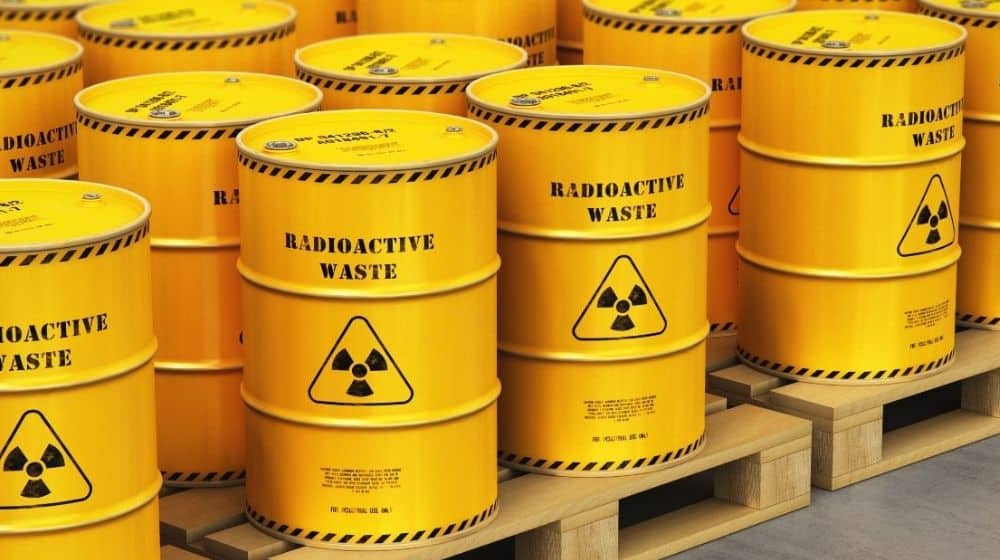If you find a tiny, silver capsule in Western Australia, do not touch it. It may be radioactive. Here’s what you need to know.
International mining company Rio Tinto and emergency services in Western Australia may never find a tiny, radioactive capsule, which they have confirmed went missing en route from an iron ore site in the Pilbara region to Perth earlier in January.
The capsule is about the size of the eraser at the end of a pencil and could be anywhere along a 1,400-kilometer (870-mile) stretch of highway.
Some have said it may even have become lodged in the tire of a passing car and may now be many more kilometers away.
The capsule is silver and measures 6 millimeters by 8 millimeters (0.31 inches by 0.24 inches) in size.
If you see something that could be this object, do not go near it and do not touch it. Inform the authorities.
An image of the capsule is below – pic.twitter.com/pbbtfZWEN9
— Chief Health Officer, Western Australia (@CHO_WAHealth) January 27, 2023
Why is The Capsule Radioactive?
The capsule contains cesium-137, which is a radioactive material that emits gamma rays, a very dangerous type of ionizing radiation that can penetrate deep into the body.
Gamma rays are the most energetic and dangerous type of ionizing radiation. They can strip electrons from the atoms in your body, damaging your cells and your DNA.
The capsule has a radioactive load of 19 giga-becquerels, a unit of radiation. And 19 giga-becquerels is roughly equal to 10 medical X-rays per hour.
This type of capsule is commonly used in the mining industry as part of gauges to measure the density of iron ores. The radiation from the gauge (the capsule) is absorbed by the material (iron ore) proportional to the material’s density.
Mining companies need that data to measure what they are extracting from the ground.
How Did it Get Lost?
The radioactive capsule seems to have fallen off a truck that was transporting it from Rio Tinto’s Gudai-Darri mine, north of Newman, in the Pilbara region to Perth.
But it was only found to be missing after an inspection on January 25, and the last time it was seen was on January 12.
The authorities have said the truck’s vibrations as it drove along the road may have caused screws and bolts to come undone, and that the radioactive capsule from the gauge tumbled out of its package and slipped through a gap in the truck.
How Dangerous is The Capsule?
Authorities have said the risk to the general public is “relatively low.” And, they say, the capsule “can’t be weaponized.”
But if you happen to see something like it along that road, don’t touch it. Get away from it, and don’t go within 5 meters (16.5 feet) of it. Call the local emergency authorities, the Department of Fire and Emergency Services.
Even though the silver capsule is very small, it poses serious health risks because it contains gamma radiation. Health risks depend on the proximity and duration of the exposure.
Exposure to this capsule can cause radiation burns or radiation sickness.
Radiation burns can show as skin redness or irritation — like sunburn — and can cause blisters, or worse symptoms in more severe cases.
Radiation sickness or acute radiation syndrome can happen if you are exposed to high levels of ionizing radiation, such as gamma rays.
Symptoms include nausea, vomiting, diarrhea, fatigue, skin irritation, and a decreased number of white blood cells, which may weaken your immune system. In more severe cases it can lead to organ failure and death.
Long-term exposure to gamma rays can increase the risk of certain types of cancers, such as thyroid cancer and leukemia.
How Are They Looking for The Capsule?
Emergency services have the GPS data of the truck, so they know exactly where to look for the capsule.
But finding an 8-mm capsule over a distance of 1,400 kilometers may be almost impossible. The Western Australia authorities are trying to find it by slowly driving with radiation detectors along the Great Northern Highway.
What Happens if They Never Find it?
Cesium-137 has a half-life of around 30 years. That means that it takes 30 years for half of its radioactive value to have decayed.
Radioactive materials are generally considered safe(r) once they reach their half-life.





















